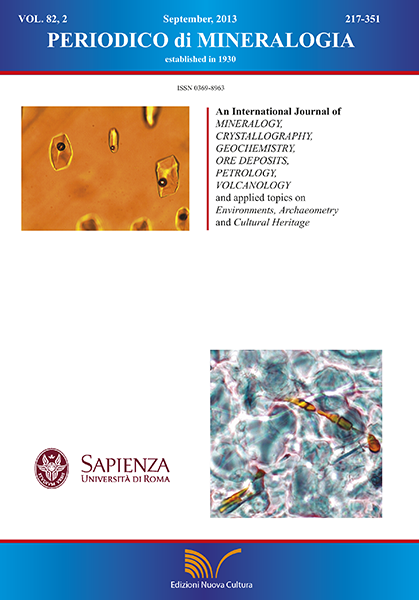Characterization of Elephant and Mammoth Ivory by Solid State NMR
DOI:
https://doi.org/10.2451/2013PM0014Keywords:
ivory, elephant, mammoth, dentin, orthophosphate, collagen, NMRAbstract
Ivory has always been considered one of the most attractive and valuable biological gem materials. It is tooth dentin, or the yellowish white, calcified, extremely elastic tissue that forms the tusks of several mammalian species. Microscopic examination of the surface in all possible directions is needed to a successful identification of cut and polished samples of ivory, but sometimes it is not enough. Supplemental techniques should be used for assisting discrimination of elephant (both Loxodonta africana and Elephas maximus) ivory and wholly mammoth (Mammuthus primigenius) ivory, because from a textural standpoint they can be remarkably similar. To provide the key identifying features of these two types of ivory is nowadays of special significance, due to the fact that elephant ivory trade and import and export are illegal, whereas wholly mammoth tusks may be legally exported and manufactured. Both materials are formed primarily from nanocrystals of biological calcium orthophosphate that are embedded in a type I collagen matrix. By exploiting 1H, 13C and 31P magic angle spinning (MAS) NMR we investigated the composition of several elephant and mammoth ivory specimens. 13C MAS NMR spectra confirmed the presence of the CO32- group associated to the carbonated hydroxyapatite in both ivory types. In the collagen structure no differences have been highlighted. Quantitative 31P MAS NMR spectra revealed important features about the inorganic matrix. The high resolution allowed us to achieve the simultaneous detection of the signal assigned to the bulk PO43- groups of the hydroxyapatite phase and of minor side peaks ascribed to unprotonated surface sites POx (PO, PO2- and PO32-) and to protonated sites POxH on the surface of the nano-sized crystals of the hydroxyapatite.


